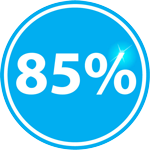Speed limits are posted to protect the public by informing drivers of the authorized, allowable speed. Common speed limits are typically statutory as stated in Montana Code Annotated 61-8-303. Speed restrictions.
Daytime speed limits are in effect from one-half hour before sunrise to one-half hour after sunset. Nighttime speed limits are in effect at any other time.
The speed limits in Table 1 went into effect October 1, 2019. These speed limits apply unless otherwise posted.
| Type of Highway | Cars and Light Trucks | Heavy Trucks* | ||
|---|---|---|---|---|
| Daytime | Nighttime | Daytime | Nighttime | |
| Interstate | 80 | 80 | 70 | 70 |
| Interstate Within Urban Area ** | 65 | 65 | 65 | 65 |
| Two-lane | 70 | 65 | 65 | 65 |
|
* over one ton manufacturer's rated capacity ** Billings, Great Falls and Missoula |
||||

